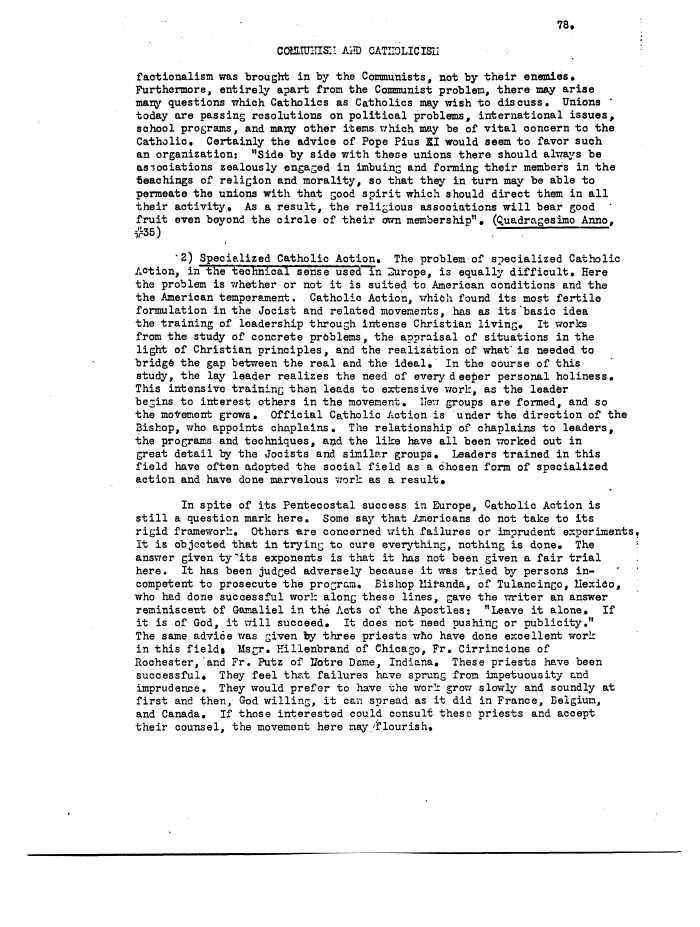 |
||||
 |
||||
| 78, nnnsi! AI-JD CATHOLIC isn . factionalism was brought in by the Communists, not by their enemies. Furthermore, entirely apart from the Communist problem, there may arise many questions which Catholics as Catholics may wish to discuss. Unions ' today are passing resolutions on political problems, international issues, school programs, and many other items xvhich may be of vital concern to the Catholic, Certainly the advice of Pope Pius SI would seem to favor such an organization: "Side by side with these unions there should always be asiociations zealously engaged in imbuing and forming their members in the teachings of religion and morality, so that they in turn may be able to permeate the unions with that good spirit which should direct them in all their activity.. As a result, the religious associations will bear good " fruit even beyond the circle of their own membership". (Quadragesimo Anno, #35) ; —— : ————————— '2) Specialized Catholic Action. The problem of specialized Catholic Action, in the technical sense used in Europe, is equally difficult. Here the problem is v/hether or not it is suited to American conditions and the the American temperament. Catholic Action, which found its most fertile formulation in the Jocist and related movements, has as its "basic idea the training of leadership through intense Christian living. It works from the study of concrete problems, the appraisal of situations in the light of Christian principles, and the realization of what' is needed to bridge the gap between the real and the ideal. In the course of this study, the lay leader realizes the need of every d eeper personal holiness. This intensive training then leads to extensive work, as the leader begins to interest others in the movement. Hew groups are formed, and so the movement grows. Official Catholic Action is under the direction of the Bishop, who appoints chaplains. The relationship of chaplains to leaders, the programs and techniques, and the like have all been worked out in great detail by the Jocists and similar groups. Leaders trained in this field have often adopted the social field as a chosen form of specialized action and have done marvelous vrork as a result. In spite of its Pentecostal success in Europe, Catholic Action is still a question mark here. Some say that Americans do not take to its rigid framework. Others «.re concerned with failures or imprudent experiments, It is objected that in tryinr to cure everything, nothing is done. The • answer given ty'its exponents is that it has not been given a fair trial here. It has been judged adversely because it was tried by persons in- competent to prosecute the program. Bishop Hifanda, of Tulancingo, llexico, who had done successful work along these lines, gave the writer an answer reminiscent of Gamaliel in the Acts of the Apostles: "Leave it alone. If it is of God, it will succeed. It does not need pushing or publicity," The same. advice was given by three priests who have done excellent work in this fieldi Msgr. Hillenbrand of Chicago, Pr. Cirrincione of Rochester, 'and Fr. Putz of Uotre Dame, Indiana. These priests have been successful. They feel that failures have sprung from impetuousity £nd imprudence. They would prefer to have the work grow slowly and soundly at first and then, God willing, it can spread as it did in France, Belgium, and Canada. If those interested could consult these priests and accept their counsel, the movement here may /flourish. |